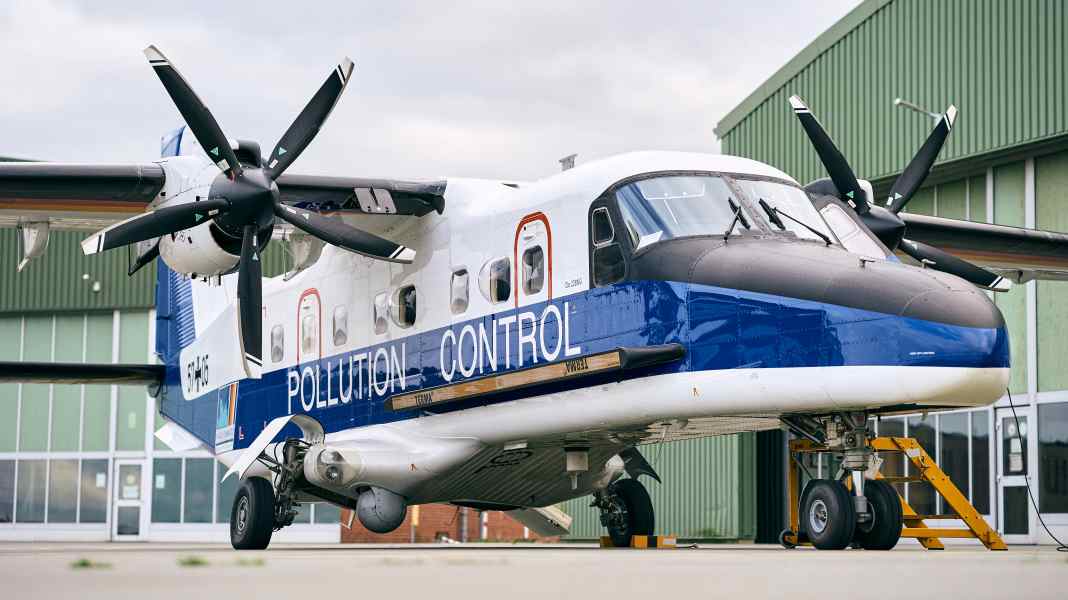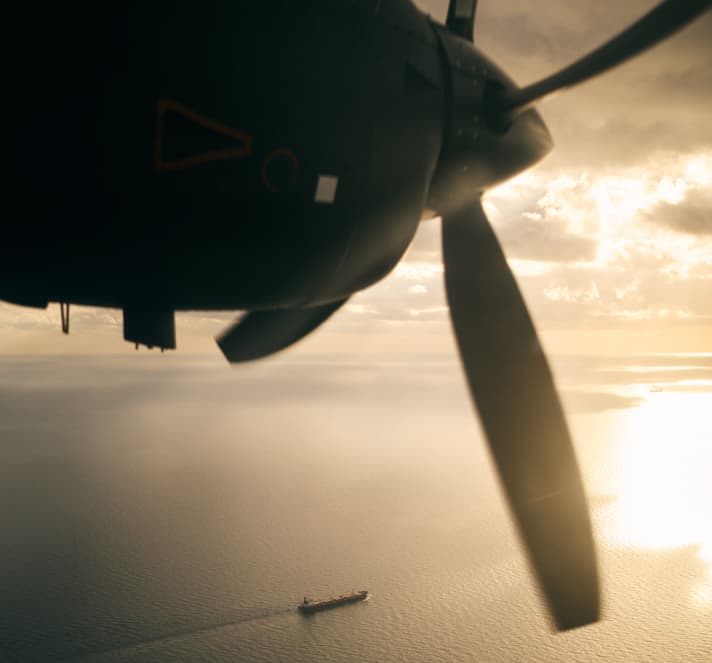Oil monitoring: North Sea and Baltic Sea - contamination remains low

Around 100 contaminants discovered
A total of 43 pollution incidents were identified in German territorial waters and in the Exclusive Economic Zones (EEZ) during 407 oil monitoring operations, 33 of which were in the North Sea and the rest in the Baltic Sea. Pollution can occur, for example, when cargo ships flush their tanks or dispose of prohibited substances.
In addition, a further 58 contaminants were discovered outside German waters and routinely forwarded to the relevant authorities, for example in the Netherlands, Denmark, Poland and Sweden. The evidence of possible polluters in German waters is being analysed by the General Average Command to the competent investigating authority.
Oil monitoring in comparison
For the year 2024, this means that a contamination was detected approximately every 11 flight hours. By comparison, in the early years of oil monitoring, pollution was detected on average every four hours.
Most of the pollution detected in German waters was minor (less than 0.1 cubic metres), which is why no active oil spill response measures such as the use of collection facilities or technical equipment were required.
Havariekommando draws a positive balance
Dr Robby Renner, Head of the Central Command for Maritime Emergencies, draws a positive balance: "For another year, the Central Command for Maritime Emergencies has worked together with the naval aviators to protect the North Sea and Baltic Sea. The high number of national flights for oil monitoring sends a strong signal to shipping: those who act illegally will not go unnoticed. It is crucial that we continue our efforts to keep marine pollution at this low level."

Cooperation with naval aviators
Airborne oil monitoring is a co-operation between the Central Command for Maritime Emergencies and the Naval Air Wing 3 "Graf Zeppelin" in Nordholz. The navy pilots and operators fly two Dornier Do 228 LM aircraft with highly sensitive technical equipment on a civilian mission for the Central Command for Maritime Emergencies. In the event of accidents at sea, these aircraft also provide valuable information for the Central Command for Maritime Emergencies.
Equipment for oil monitoring
Both aircraft have been modernised in recent years; their new sensor equipment is even more powerful and can detect even very small contaminants. The highly sensitive technical equipment includes radar, infrared and ultraviolet sensors as well as microwave radiometers, fluorescent lasers and video cameras, which make it possible to detect oil films and other contaminants on the surface of the water. The legal basis for oil monitoring includes the MARPOL Agreement of 1973the International Convention for the Prevention of Marine Pollution.
